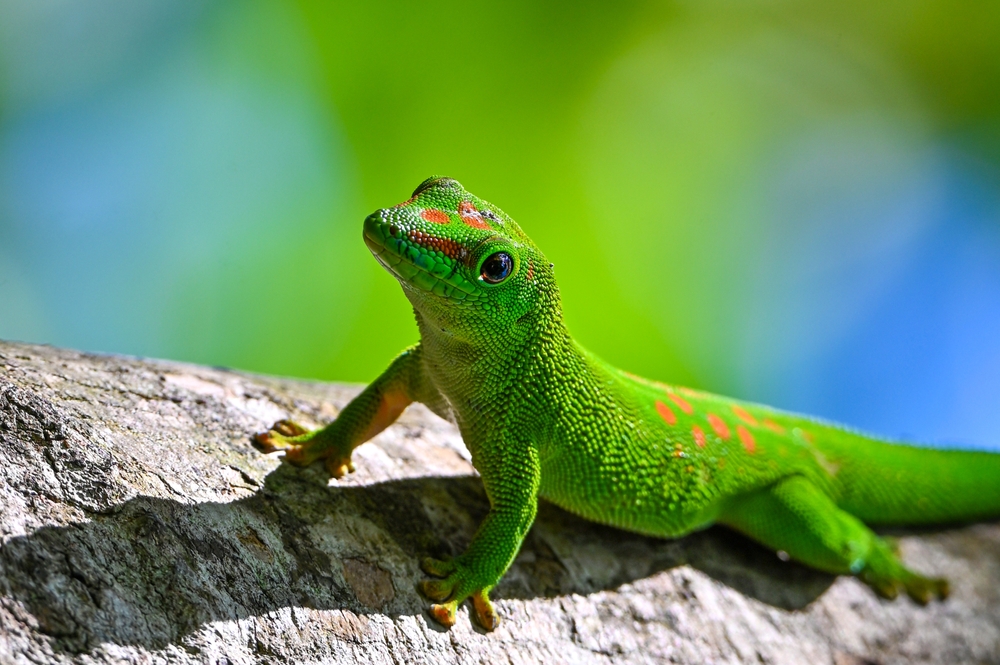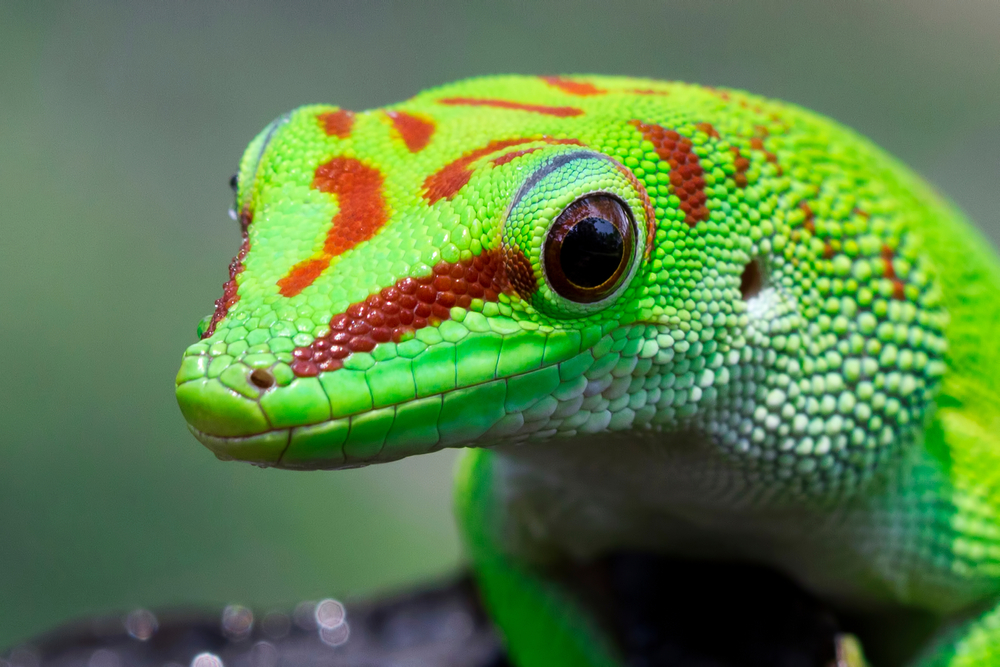The giant Madagascar day gecko (Phelsuma grandis) is the largest of the Phelsuma species. Previously considered a subspecies of Phelsuma madagascariensis, grandis is now thought to only inhabit a very small distribution in North Madagascar. Like its relatives P. madagascariensis and P. kochi, this species inhabits a variety of environments from deciduous forests to banana plantations and rainforests. Because of their adaptability, there are now populations on Reunion and Mauritius as well as in Florida and Hawaii. These animals will begin life with lots of elaborate red patterns across their dorsum but eventually, grow into an almost uniform green lizard with some spots and facial markings. Males can quickly turn aggressive towards females and must be housed individually.
Housing
Growing up to 25cm in length, giant day geckos are very large geckos. They are equally as active as the smaller species and therefore require large enclosures.
Giant day geckos require a minimum 60x45x60cm terrarium for a single adult. A 90x45x60cm terrarium is preferable.
Whilst giant day geckos are popular Phelsuma, they are (in our opinion) not the best-suited for captivity and smaller species can live amicably in smaller setups. New keepers should explore our care guides for lined day geckos and peacock day geckos.
Heating, Lighting and Humidity
Giant day geckos need high UVI and a basking spot of 35℃. This can be achieved with a Metal Halide Bulb creating a column of heat/light or a T5 bulb emitting UVB alongside a spot bulb producing heat.
Décor must be positioned so that the gecko can bask at various heights beneath the basking spot and move close to or further from the heat.
An ambient temperature of 22 – 25℃ is optimal and humidity should spike and fall between 60% and 80% daily.
P. grandis inhabits a range of habitats in northern Madagascar, including coastal regions. They are not as reliant on high humidity as other species of Phelsuma but should be misted daily to ensure humidity is kept relatively high.
Misting also allows the day gecko to drink. Misting systems can be useful, but hand-sprays are equally as effective, if the keeper maintains a regular schedule.

Bioactive vs Naturalistic
Phelsuma species are arboreal. Decor, bamboo and broad-leaved plants are necessary to allow them to bask and use the full space within the terrarium. Substrate is not essential, but it does help hold humidity and plants can grow directly from the substrate.
Fast-growing climbing plants like Philodendron scandens and tall, broad-leaved plants like Peace Lillies are great for day-gecko enclosures. Giant day geckos will require hardier, stronger plants
Giant Day Gecko Diets
Day geckos are omnivorous. They eat mostly fruit, berries and nectar. Day geckos will also occasionally eat flying insects and pollen (from flowers and pollinating insects).
Research suggests brightly-coloured nectars are most appealing. Many Phelsuma species are adaptable and feed on a variety of fruits and nectars, including non-native ones. In urban environments where sugar is artificially high, only 2% of their diet may consist of insects.
In captivity, day geckos should be fed a high-sucrose, fragrant solution containing all the necessary vitamins and minerals such as Phelsuma Passion. We recommend this because even wild Phelsuma are drawn to chocolates and sugar, so it is paramount that a reliable brand is selected.
If a nutritionally complete diet is provided, non-nutritious insects can be offered. Flying insects, like black soldier flies, wax moths and silk moths offer great enrichment for active geckos to chase.
To read about another fascinating gecko, Smith’s Green Eyed Gecko (Gekko smithii), click here.
